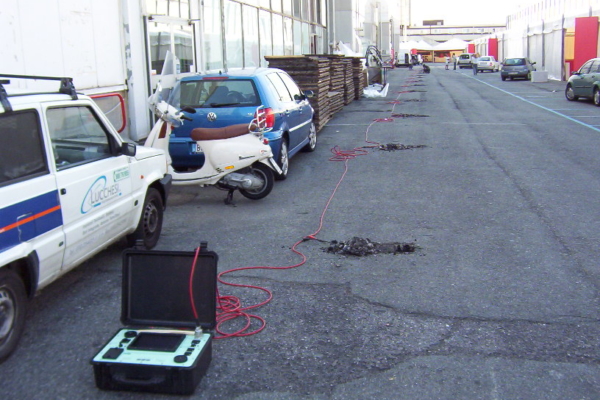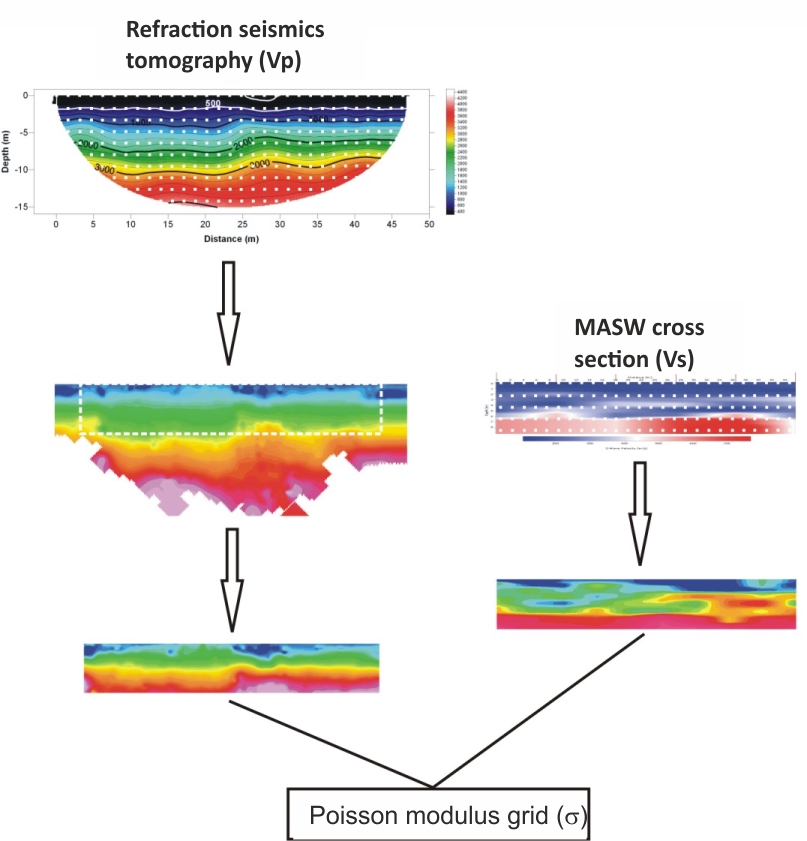- Refraction seismics relies upon the phenomenon of critical incidence of seismic rays at an interface between two layers, occurring when the underlying medium is characterised by an higher velocity. When the rays come under the critical angle, elastic energy is transmitted at the interface and propagated back to the surface. The seismic rays comes from artificial sources as sledgehammers, weight drops, guns and explosives, and then detected at the surface by suitable sensors (geophones). The seismic data are finally recorded by a data logger (seismograph), synchronised with the shot time. Modern techniques allow for a multidimensional velocity characterisation of subsoil, of both Primae (P) and Secundae (S) waves. Refraction seismics is mostly used to reconstruct the bedrock surface and earth’s layering through 2D and 3D inverse modelling, but it has many other applications.
- Surface waves seismics exploits the Rayleigh wave propagation along the Earth’s surface, starting from a shot point, and recorded at the surface by a multichannel device. Rayleigh waves arise from the superposition of longitudinal waves (P-waves) and vertical shear waves (Sv-waves), and affect the subsoil down to a depth depending on their frequency. The analysis at different frequencies allows to investigate different horizons. The used seismic sources has a rather broad spectrum, allowing to simultaneously investigate different depths. These sources can be deterministic (like a shot) or come from the environment (noise from traffic, industrial plants, etc.) : in the first case the method is called MASW (Multichannel Analysis of Surface Waves), while in the latter NASW (Noise Analysis of surface Waves) or ReMi (Refraction Microtremor). Surface waves method is aimed to reconstruct the vertical Vs distribution at a site, down to great depth compared to the array length and can also detect velocity inversion zones. This is a fundamental step envisaged in seismic building design rules, as EUROCODE 8. Soil characterisation plays a major role in tectonically active areas, where site amplification may be dramatic.











